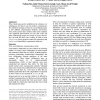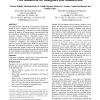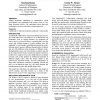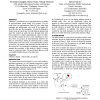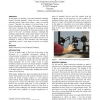CHI
2002
ACM
15 years 1 months ago
2002
ACM
This paper proposes a transformation of the Cognitive Walkthrough (CW), a theory-based usability inspection method that has proven useful in designing applications that support us...
CHI
2002
ACM
15 years 1 months ago
2002
ACM
When virtual teams need to establish trust at a distance, it is advantageous for them to use rich media to communicate. We studied the emergence of trust in a social dilemma game ...
CHI
2002
ACM
15 years 1 months ago
2002
ACM
This paper borrows ideas from social science to inform the design of novel "sensing" user-interfaces for computing technology. Specifically, we present five design chall...
CHI
2003
ACM
15 years 1 months ago
2003
ACM
We present the System Blocks, a new physical interactive system that makes it easier for kids to explore dynamic systems. A set of computationally enhanced children blocks, made o...
CHI
2003
ACM
15 years 1 months ago
2003
ACM
CHI
2003
ACM
15 years 1 months ago
2003
ACM
Adding multiscale capabilities to collaborative virtual environments can potentially help people work on very large electronic worlds. Our experiment shows that user performance o...
CHI
2003
ACM
15 years 1 months ago
2003
ACM
City Lights are space-efficient fisheye techniques that provide contextual views along the borders of windows and subwindows that describe unseen objects in all directions. We pre...
CHI
2003
ACM
15 years 1 months ago
2003
ACM
Olfaction is considered to be an important sensory modality in next-generation virtual reality (VR) systems. We currently focus on spatiotemporal control of odor, rather than capt...
CHI
2003
ACM
15 years 1 months ago
2003
ACM
People with motor impairments often cannot use a keyboard or a mouse. Our previous work showed that a handheld device, connected to a PC, could be effective for computer access fo...
CHI
2003
ACM
15 years 1 months ago
2003
ACM
In this paper, we describe a new force-feedback technique termed "inverted damping", which aids users in manually selecting specific items from within a range of possibl...

